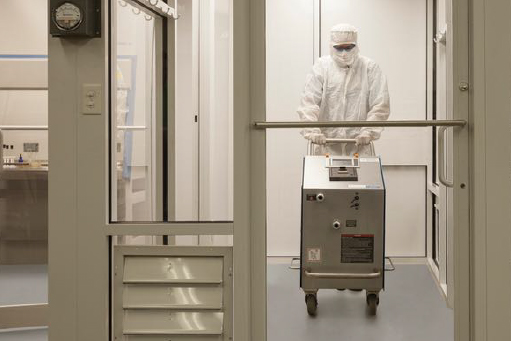
HVAC Systems and Hydrogen Peroxide Decontamination (Deprox)
The COVID pandemic increased awareness and use of relatively new decontamination methods for medical facilities. In addition to standard surface cleaning and disinfection, hospital managers employ vaporized hydrogen peroxide (VHP) systems within negative pressure rooms to eliminate SARS-CoV-2. Sometimes referred to as “Deprox,” these systems distribute a mixture of hydrogen peroxide and water within a room. The mixture is small enough to decontaminate areas that are too difficult or impossible to clean by hand.
However, VHPs must work in conjunction with HVAC systems to be safe and effective, and most functional descriptions put strict limits on an HVAC’s operation during decontamination. Use the following information to guide your design when connecting to VHPs.
HP Vapor vs Aerosol Systems
There are two methods for dispersing hydrogen peroxide (H2O2) for airborne disinfection. One is vapor phase hydrogen peroxide (VPHP) and the other is aerosolised hydrogen peroxide (aHP). The main difference being the size and concentration of the hydrogen peroxide as it leaves the system. VPHP systems produce much smaller particles and at higher concentration than aHPs. They are much closer to a gas than aHPs, which are more of a “fog” ranging from 5 and 20 μm in size.
Exposure Limits
Both VPHPs or aHPs require some downtime for operation and room exposure levels to return to normal. Decontamination cycles may take up to three hours to complete. Exposure to hydrogen peroxide vapor can be harmful, resulting in irritation to the eyes, nose and throat. The OSHA standard for permissible exposure limits to H2O2 is 1 part per million parts of air (ppm) averaged over an eight-hour work shift.
Functional Descriptions
Include these sections when writing a FD that includes VPHP or aHP for negative/positive pressure rooms.
Room Modes—Room modes include isolation, deprox and standby. During the deprox process, the HVAC system should be turned off and dampers closed to ensure the VHP system works effectively.
Closing Dampers—When switching from standby or isolation to deprox mode, factor in a lag time to allow dampers to fully close. For example:
- If the room is switched to deprox mode, the deprox LED will flash on and off for 75 seconds whilst the room dampers are driving closed. Once the 75 seconds have passed, the LED will be enabled.
Velocity Pressure Setpoint—Include a deprox pressure setpoint when setting duct velocity pressure points.
- If the room is put into deprox mode, the velocity pressure setpoint is reduced to the deprox velocity pressure setpoint (To be determined at time of commissioning).
Smoke and Fire Detectors
Particles from VPHP or aHP can set off fire and smoke detectors. Consider the implications for your HVAC system. Since HVAC systems are normally integrated into fire systems to ensure proper exhaust of smoke, a false alarm may affect your system.
